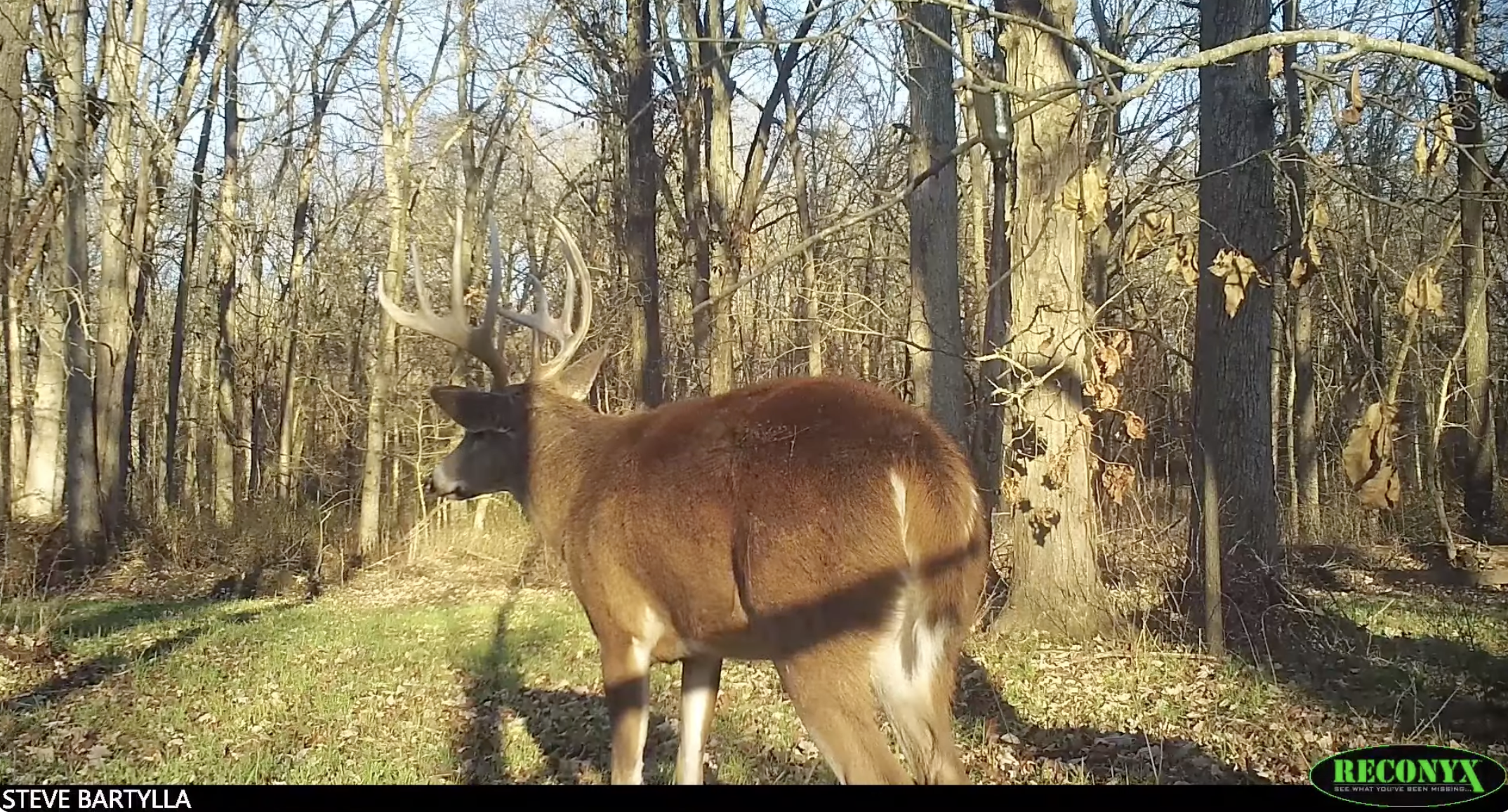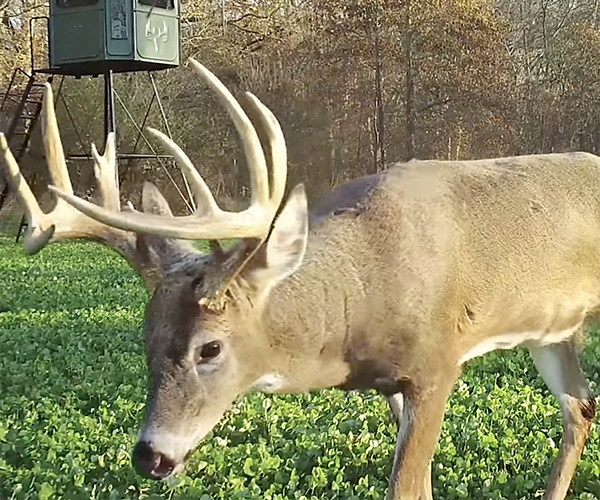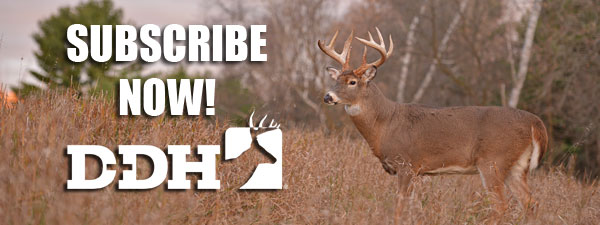There’s nothing like a few crisp, close-up trail-camera photos of a big buck to get you pumped for bow season. Those were my exact thoughts late last summer as I studied some new images from a camera my friend Chad had placed on a piece of ground we planned to hunt during the early season.
Best of all, we had photos of not one, but two thumper bucks. And, although the bucks had been photographed in several locations, one spot in particular seemed to stand out as “the” place to be when bow season rolled around.
It wasn’t that this area produced so many more pictures than other areas. In fact, it yielded fewer. What it did offer was consistent photos of both bucks. That immediately told me that we had guessed right and placed that camera in a definitive core area.
The most encouraging part of all of this was that these pictures had been captured within a half-mile radius of a prime stand site I discovered the previous summer. Since this site served as an in-woods pinch point, I was certain the bucks were consistently using this travel corridor.
I was feeling quite confident when I walked to the stand for my first morning hunt. The morning was crisp and clear. It was one of the days where you think you’ll not only see deer, but you’ll see bucks. My hunch was right, and it didn’t take long for the action to start.
It was shortly after daylight when I heard a twig snap. Out stepped a doe. Hot on her heels was an incredible triple-beamed buck. However, unlike the stories we so often hear about does leading Mr. Big around by the nose, it only took seconds to realize that the buck was dictating the doe’s travels. Each time she tried to veer off course, he would corral her and aim her back to where he wanted to go. Luckily, that was past my stand.
Several tension-filled minutes later, my dedication to hunting the big guy’s core area paid off handsomely.
Core Areas Defined
The term core area has been tossed around by many self-proclaimed experts in recent years. Frankly, many of these concocted definitions range widely. Unfortunately, there also seems to be a range of what some biologists use as an official definition. I believe that leads to a lot of confusion, particularly when the “expert” doesn’t clearly define the version of the core area he’s talking about.
I’m certainly not arrogant enough to believe that my views of core areas are the true definition, but I will still strive to articulate them as clearly as I can. With that, at least you’ll be able to understand my views and how I apply them.

Simply put, I believe a mature buck’s core area can be summed up as the area where he regularly spends the daylight hours during the nonrutting portions of the season. At first thought, one might assume that means his bedding area. Although that certainly is included, there’s more to it.
Much more.
Bucks move during daylight far more than many hunters give them credit for. As D&DH’s own John J. Ozoga has shared in his writings and in my personal conversations with him, deer have five peak movement periods in a 24-hour cycle: dawn, dusk, twice during the night and once at midday.
For mature bucks, the midday movement can vary significantly. However, outside of the rut, I’ve noticed this movement most often consists of rising to urinate, traveling to a nearby food or water source, or relocating to a bedding area closer to the evening food source. By my definition, all of those areas would be included in the buck’s core area.
Additionally, I include the staging areas near open food sources a part of a buck’s core area. After all, staging areas are the locations where bucks hole up and wait for darkness. However, because mature bucks often aren’t comfortable entering open fields and meadows or young clear-cuts until after dark, all areas that bucks use as staging areas wouldn’t count toward core areas.
Gaps in the Pattern
Unlike many core area representations I’ve seen, I don’t view them as circular or oval in shape. Instead, I see them as a series of busted-up, old-fashioned wagon wheels. The major hubs represent bedding areas and daytime food and water sources, with the spokes of various lengths connecting these hubs and running toward the nighttime food and water sources.
As opposed to the more common oval or circular representations, many dead areas exist in the midst of this tangle of hubs and spokes. To me, this makes perfect sense. Anyone who has spent much time chasing mature bucks realizes that these deer don’t spend much, if any, time within most parts of the oval area he spends daylight in. Instead, he spends the most time in relatively small areas and transitions between them. If you want to kill that buck, placing a stand in that oval does almost no good if you aren’t covering one of the transition spokes or the hubs.
The other issue that isn’t touched on much is that core areas can, and often do, change during the year. With changing food sources comes changing transition routes. After the acorns are gone, a post-rut buck has no reason to go out of his way to visit the oak ridge. On the flip side, after the corn dries, the apples start dropping, or the cool-season grasses and weeds start to pop, motivation to travel to these locations become obvious.
Bedding areas can also shift. The farther deer are forced to travel for new food and water sources, the more likely it is that their bedding areas will change.
The rut is the other complication during this time. When it hits, the buck’s primary motivations change from simply eating, drinking, comfort and survival, to perpetuating the species.
During the peak scraping, chasing and tending phases, doe bedding areas will greatly influence how, when and where mature bucks move. However, not all doe bedding areas are included. The ones to watch are those that become littered with scrapes seemingly overnight.
Other Considerations
Social activities will also cause shifts, especially during the off-season months. Does will stake out their areas by defending fawning grounds. This can cause a mature buck to temporarily vacate his core area. Bachelor-group behavior affects individual bucks in the same manner, as does the winter yarding behavior of mature bucks and does.

Still, for all of the challenges and nuances involved in this method of defining a mature buck’s core area, I believe the tactics listed in this article make the most sense for the serious deer hunter.
Since our goal usually involves killing a mature buck, I want to know where he’ll be during daylight. Therefore, I presume his core area consists of the specific areas where he spends most of his waking hours during hunting season.
Core Area Details
A buck’s familiarity with the habitat — especially the sense of security it provides — is the key component to a core area’s configuration. What isn’t quite as apparent at first glance is that all bucks have differing degrees of sensitivity throughout their core areas.
By my definition, a buck’s core can be broken down into four subcategories:
- Bedding areas.
- Daytime, in-woods food and water sources.
- Staging areas near evening food and water sources.
- Trail networks.
- Each of these groups have differing sensitivity levels.
Starting with the bedding area, it only makes sense that bucks are most familiar with this subcategory. After all, they spend more time here than all of the other subcategories combined. Furthermore, if there’s any location where bucks place a higher premium on safety than in their bedding area I’ve yet to find it.
The result is that they know the immediate area surrounding their bedding areas better than anywhere else. That makes it far more challenging to get away with disturbances going undetected. I don’t believe kicking a mature buck from his bed once or twice is the kiss of death to hunters. However, if one then goes on to create massive shooting lanes and leave odor all over the area, our odds do go down significantly.
Bucks can also know the details of their in-woods food and water sources very well. However, size has a lot to do with how tuned-in they are. For example, a hunter can often get away with far more while setting stands or hunting a large oak ridge than they could with a small pond. In either case, the buck is normally not as touchy as in his bedding area.
The same holds true for staging areas. It is my belief that this comparatively easier-going attitude in both of these locations is due to the buck feeling more secure because it is on its feet.
Finally, the connecting trails are where bucks are both most at ease and least familiar — and where hunters can get away with the most. After all, the bucks aren’t really lingering here and are far less likely to notice a few branches out of place. They’re just getting from Point A to Point B.
Before I move on, I must point out that no matter what part of their home range they are in, bucks are still bucks. Sure, there are generally different tolerance and comfort levels in these groupings, but a buck still is most often going to slip away first and ask questions later if he senses danger.
When to Make Your Move
The tendencies for bucks to shift their core areas over the seasons comes in handy. With changing food sources and population dynamics — such as doe fawning areas, bachelor grouping and the rut — bucks commonly have very differing cores with each season. Furthermore, food, the rut and hunting pressure often causes major and minor shifts during hunting season.

This simple fact is both the hunter’s best friend and worst enemy. It works out very well in that during the off-season, we can slip into a buck’s fall bedding area and make fairly major changes and still have it appear natural by the time he finally cycles back through the next fall.
On the flip side, when a hunter discovers an active core area during hunting season, if at all possible, he should avoid waiting for the next week to hunt it. Because core areas can be very fluid in nature, don’t count on the buck continuing to do the exact same thing the entire season.
Hunters who assume a buck’s routine will stay the same are often left hunting core areas that have been abandoned.
Conclusion
I view core areas as the locations where bucks spend most of their daylight hours on a fairly consistent basis. Since they often don’t spend much time in most of the surrounding habitat, core areas can be fragmented.
The biggest challenge lies in finding the active areas, and there really isn’t a simple formula for accomplishing that goal. Most times, it’s some form of a combination of observations, scouting-camera pictures, buck-sign interpretation and, of course, woodsmanship. It can be very tough figuring it all out, but unearthing even a relatively small portion and piecing it into its grouping can put you well on your way to success.
— Steve Bartylla is a veteran outdoor writer, seminar speaker and big-buck hunter from central Wisconsin. For more information on his buck-hunting tactics, visit www.YouTube.com/@DDHONLINE and click on the Grow ’em Big or Hunt ’em Big tab.
D+DH In-Depth is our premium, comprehensive corner on America’s No. 1 game animal. In this graduate-level course, we’ll teach you about deer biology, behavior, and ultimately, how to become a better hunter. Want to be the first to get our premium content? Become a D+DH Insider for FREE!


